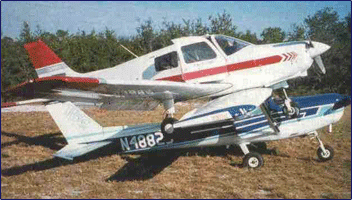Excerpts from "Close Encounters" by Jay Hopkins, Flying magazine, Mar, 2001

"Even if the increase (in reported runway incursions) is due to better reporting and record keeping, that does not alter the fact that we face a serious problem, and all the current attention has not significantly reduced the number of incursions and near-collisions."
"General aviation accounts for over half of the runway incursions, and it is important to keep in mind that when an airliner and small airplane tangle, the small airplane never wins."Airport staff comment: The same thing can be said for a Falcon 50 or a Gulfstream and a C-172 or Mooney. The little guy will never come out on top.
The "best practices" that can be organized into four (4) major groups:
BASIC KNOWLEDGE:
- Attention during flight training is naturally focused on what happens in the air and not on airport signage & markings.
- The ground markings section of the AIM probably does not receive a lot of attention during flight training, and even less thereafter. >> Check out Chapter Two, Section Three of the AIM.
PREFLIGHT PLANNING:
- Keep in mind the potential risks associated with surface operations.
- Check the NOTAMs for any information on runway or taxiway closures or construction areas.
- Review a map layout for both the departure & destination airfields. Purchase a commercial airport guide or visit AOPA's website (www.aopa.org/asf) to see if they have an airfield layout diagram that you can print and take along with you in the cockpit.
TAXI CLEARANCE:
- Give your understanding of the taxi clearance the attention that it deserves.
- ALWAYS read back any runway crossing or hold short instructions.
- If there is even the slightest doubt, ask for clarification!
- At an unfamiliar airport, simply state that you are "unfamiliar" and request "progressive taxi instructions".
- At an uncontrolled airfield, you can often get advice on the CTAF frequency.
TAXIING:
- Focus on the job at hand; don't allow yourself to be distracted by trying to accomplish your preflight checks while taxiing.
- Everything should be done BEFORE you start moving, or AFTER you get to the run-up area.
- Concentrate on where you are going. Be mindful of crossing other taxiways and runways that are not active - just in case.
- Whenever you approach a runway or taxiway, look carefully for any crossing or opposing traffic.
- Watch out for vehicles as well as other aircraft.
- At an uncontrolled field, broadcast your intention to cross a runway on CTAF.
- As you approach a run-up area, make sure that no part of the airplane extends past the hold short line.
- In the run-up area, park so you check the final approach one last time before you taxi out onto the runway.
- Monitor the tower frequency for other aircraft that may have been cleared to take off or land.
- Be particularly leery of "taxi into position and hold" clearances, especially at night. You don't have to accept this clearance, you know!
- Make sure you are completely past the hold short line as you exit the runway. Stop and get your taxi clearance.
- If you have the slightest doubt about where you are or where you are going, STOP immediately & ask for help.
Make safety your number one priority. Visit PDK's Runway Incursion Page and learn about hazard areas at your airport.